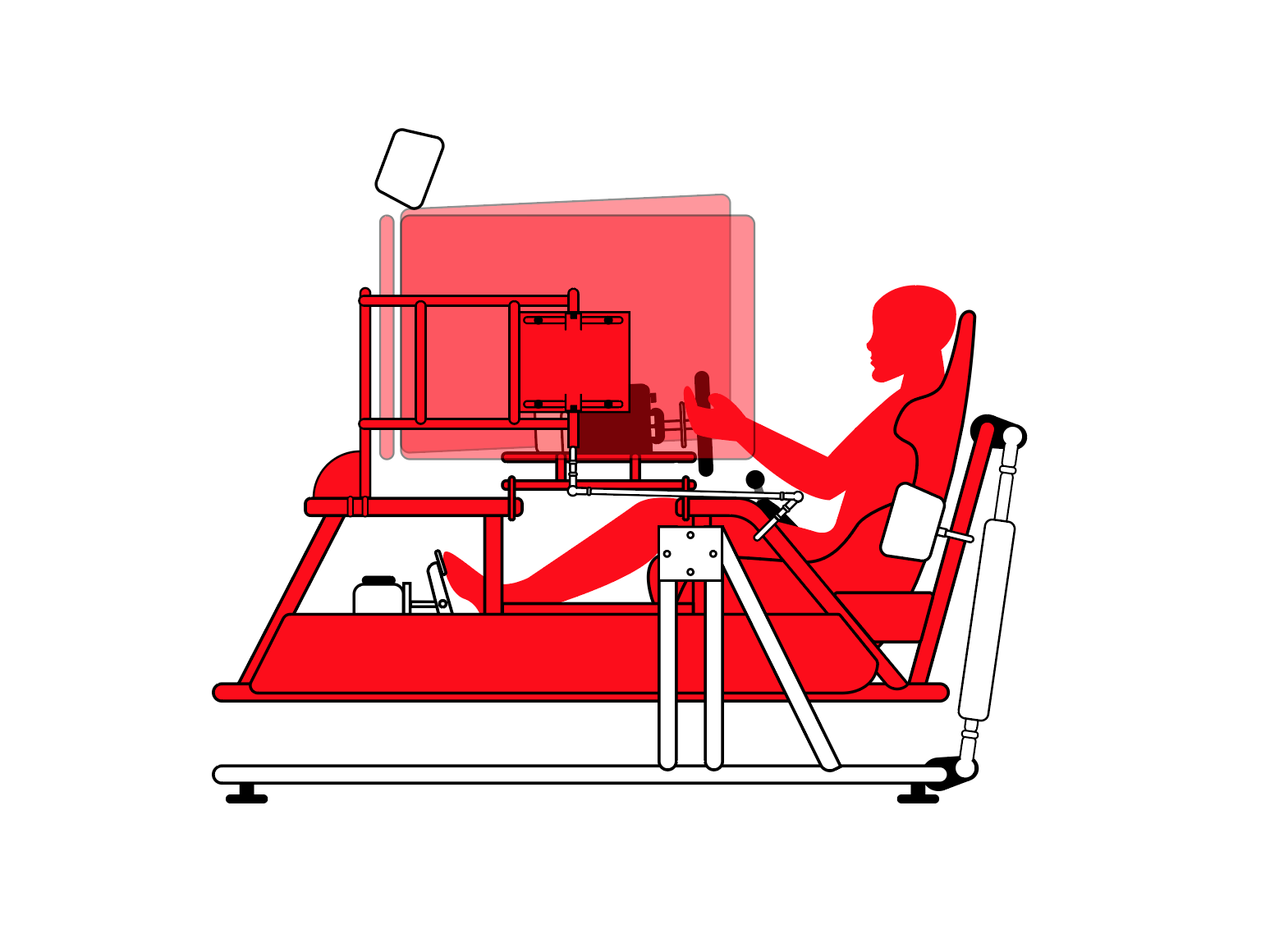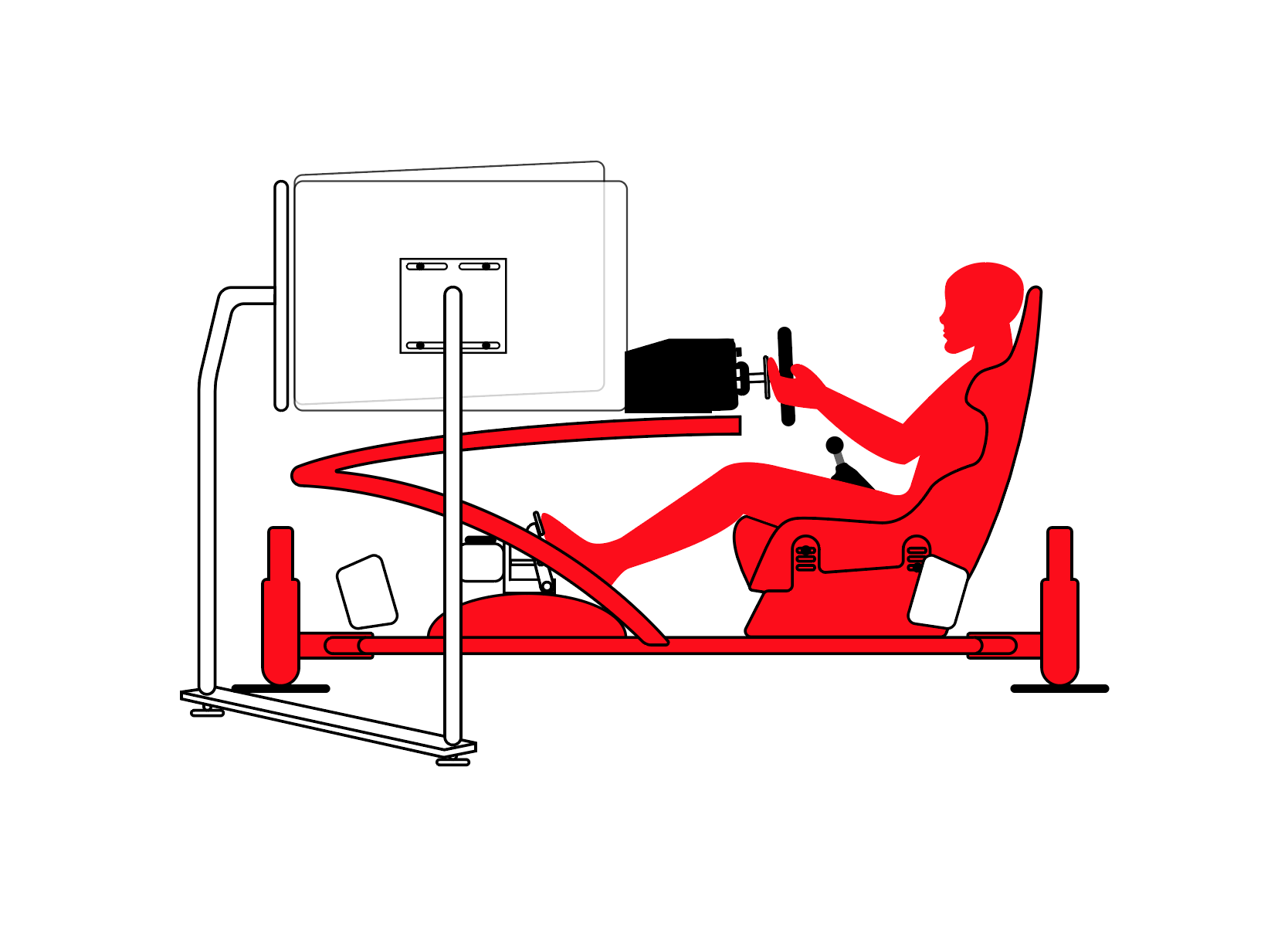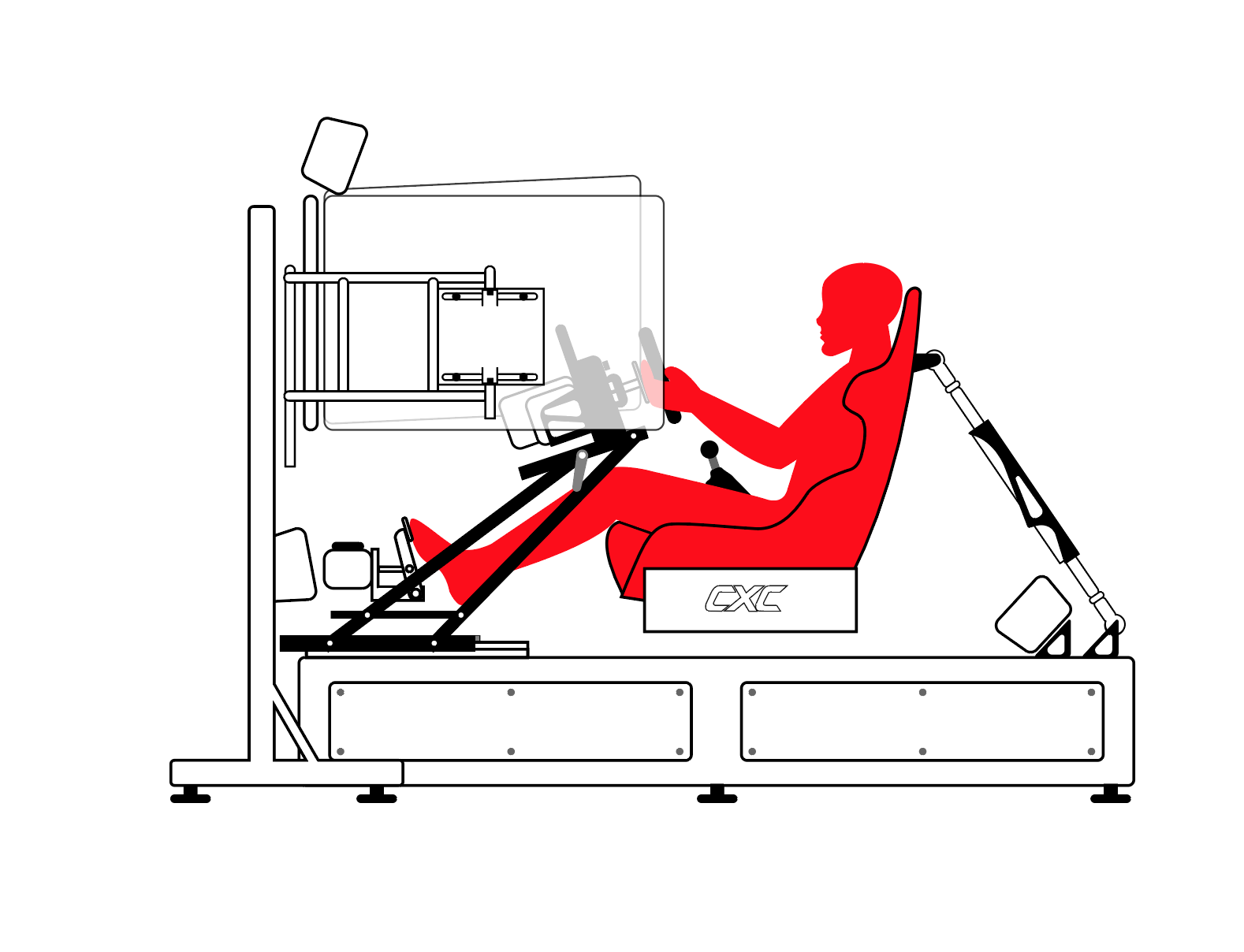One question that we are asked often is ‘why is a CXC Simulations simulator better than the other ones available on the market?’ We answer that question with a question of our own: ‘Which one feels the most realistic?’
Years of testing and evaluation have taught us that when it comes to simulators – responsiveness is key. Events and moments just happen at the same rate that they do in real time. Nuanced, high-fidelity movements must happen in a simulator as quickly and accurately as possible for the driver to experience an accurate and enjoyable racing experience. The car must pitch and yaw at the same rate as the real car. A curb must feel like a curb, rumble strips have to feel like rumble strips, and the unique sensation of the car’s weight shifting under heavy deceleration has to feel the same otherwise your brain won’t think you are in a simulator.
CXC Simulations engineers, who are active race car drivers, have a background in both racing and engineering and have applied many of the same techniques and principles that make race cars go fast around a racetrack to replicate the sensation of being on a racetrack. We’ll examine those now.
The Case For Seat Movers
Some competitors point to the fact that the CXC Simulations Motion Pro II moves only the driver and the seat as a negative mark on the product. But in fact, the opposite is true – what they are pointing out is the clear and obvious benefit of the Motion Pro II. We’ll use science to demonstrate it.

Consider the response and speed of a simulator that must move the mass and inertia of the platform, screens, and driver of a simulator – approximately 550 lbs.

Now consider the difference in response with the additional mass and inertia of a simulator that moves its platform and driver – approximately 375lbs.

And finally, consider how much faster the response and speed of the simulator will be in a Motion Pro II which only moves the seat and driver – approximately 180lbs.
By minimizing the weight being moved and concentrating the power of the linear actuators onto the driver and seat, the driver will be moved at a rate of speed similar to being in a race car. But there are other considerations taken into account by CXC Simulations to increase the rate of speed. It takes a tremendous amount of power to not only move more mass, but also to move a simulator vertically to create a substantial “lift” feeling. The Motion Pro II balances the weight of the seat and driver on a center pivot, which supports the weight of the seat and driver and allows the actuator power to be concentrated on moving the seat.
Motion systems are error-driven, which means they are setting out a commanded position from an actual position. When a simulator moves a large amount of mass in a new direction, it must stop the mass which will introduce oscillations and flex that the motion system must now contend with. And the way that the heavy simulators compensate with this is to slow down, resulting in a sluggish, inconsistent and unrealistic response time.
Body Position
You may be wondering how, with the motion of the seat relative to the simulator, that the Motion Pro II can maintain a realistic driving experience. One thing to consider here is that the steering wheel, pedal set, and the seat are in fixed locations. What does change is the angle between these items as the seat moves around a stationary point under the seat, causing slight bending of the elbows and knees of the driver.
This phenomenon is called proprioception. These additional motions in the joints trick your brain into feeling additional motion, adding to the sensation of what it feels like to be in a race car. Hydraulic brakes and seatbelt tensioners add to the realism.
Consider the motions that 24 Hours of Le Mans winner Townsend Bell is going through in this video at the wheel of a Motion Pro II:
and the motions that British Touring Car Championship driver Andrew Jordan goes through:
Math is Hard But it Proves Our Point
You may be familiar with Albert Einstein’s equation F = m*A, or Force is equal to Mass times Acceleration. In terms of simulators, you can consider this equation as A = F/m, or, Acceleration = Force/Mass. In a simulator, the force (F) is the available thrust force generated by the electric motion actuators, and the mass is the total mass that is being moved by the actuators.
So, we know that maximizing the force generated by the actuators will help to generate more force. But, minimizing the amount of mass that is being moved is critical to generating force. There is also a practical aspect to this in that there is limited available power. A standard US outlet is 120 volts AC and 15 amps max current draw, or roughly 1800 watts per circuit.
In short, to replicate the high-speed, high-frequency motions you experience behind the wheel, it is important that the simulator moves the driver’s body as quickly and efficiently as possible.
The Proof Is Behind The Wheel
If you’ve made it this far, you are probably very serious about racing and racing simulation. As we said in the beginning, the question you should ask yourself when considering a racing simulator is, ‘Which one feels the most realistic?’ We feel the low-mass, full-motion CXC Simulations Motion Pro II offers the most realistic driving experience available and many professional racers feel the same way. Let us know if you’d like to experience once and schedule your test drive today: Contact Us
